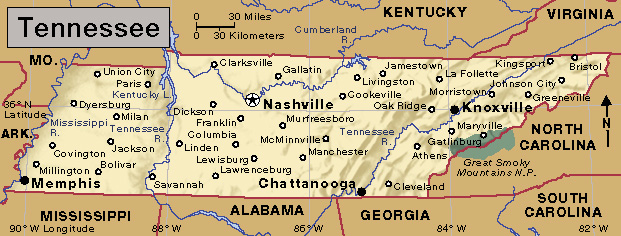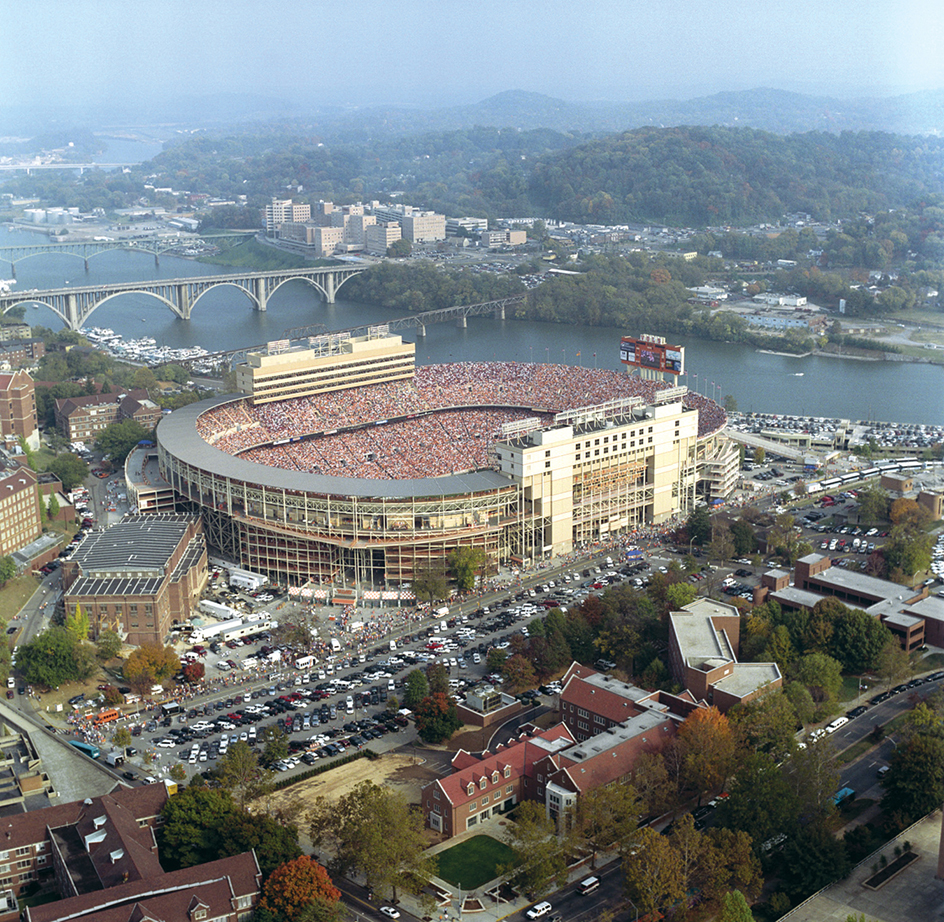Knoxville, << NOKS vihl >> (pop. 190,740; met. area pop. 903,300), is one of the largest cities in Tennessee. Knoxville also ranks as a commercial, educational, and industrial center of Tennessee.

Knoxville lies on the Tennessee River in the heart of the Appalachian Ridge and Valley Region of eastern Tennessee. The Tennessee Valley Authority (TVA), a federal development agency, has its headquarters in Knoxville. The city also serves as the gateway to Great Smoky Mountains National Park.
In 1786, the James White family of North Carolina became the first permanent settlers in the area of what is now Knoxville. White, a trader and farmer, chose the site because of its location near the junction of three rivers used as travel routes. In 1791, the site became part of the newly organized Territory of the United States South of the River Ohio. William Blount became territorial governor. White’s settlement, named Knoxville to honor Secretary of War Henry Knox, became the new territory’s capital.
Description.
Knoxville, the county seat of Knox County, covers 104 square miles (270 square kilometers). The Knoxville metropolitan area occupies 3,649 square miles (9,453 square kilometers).
Knoxville is the home of Knoxville College and the main campus of the University of Tennessee. The Knoxville Symphony Orchestra performs regularly throughout the year. Places of interest in Knoxville include the Knoxville Museum of Art, the Women’s Basketball Hall of Fame, Zoo Knoxville, and restorations of the log cabin and a fort that James White built in 1786. Blount Mansion, built for Governor William Blount in 1792, is one of the oldest frame houses west of the Blue Ridge Mountains.
The economy of Knoxville depends heavily on the Tennessee Valley Authority, the University of Tennessee, the Oak Ridge National Laboratory, and the U.S. Department of Energy facilities at Oak Ridge. Manufacturing is a less significant part of the city’s economy than it once was. Service industries have become increasingly important. The West Town Mall shopping complex helps make the city the major commercial center of eastern Tennessee. Tourism in the area has grown. Gatlinburg in the Great Smoky Mountains and Pigeon Forge, with its country-music theaters, outlet malls, and Dollywood theme park, attract many visitors.

Government and history.
Knoxville has a mayor-council form of government. City voters elect the mayor and the nine city council members to four-year terms.
Cherokee Indians lived in the Knoxville area when the White family arrived in 1786. Knoxville was incorporated in 1791. It was the capital of Tennessee from 1796 to 1812. During the American Civil War (1861-1865), Union troops led by Major General Ambrose E. Burnside defeated Confederate forces under General James Longstreet in Knoxville. Rapid industrial development after the war led to a population boom. The city’s population rose from 8,682 in 1870 to 32,637 in 1900.
Congress established the TVA in 1933. TVA dams made the Tennessee River navigable to large vessels from New Orleans to Knoxville via the Mississippi and Ohio rivers. The dams also created new supplies of electric power. Today, most of TVA’s electric power comes from nuclear and coal-burning plants.
In the last half of the 1900’s, many old buildings near the center of Knoxville were torn down and replaced by new ones. A World’s Fair was held in the city in 1982. Redevelopment of an old industrial area along the Tennessee River began in the 1990’s and continued into the 2000’s. The project included the construction of parks, condominiums, and restaurants. Development projects on Knoxville’s South Waterfront area, along the south bank of the Tennessee River across from downtown, were ongoing in the 2010’s and 2020’s.
For the monthly weather in Knoxville, see Tennessee (Climate) .
